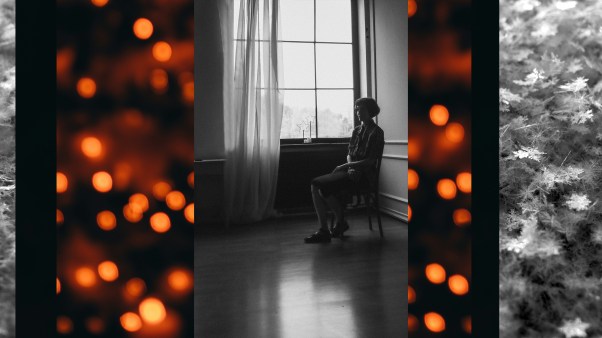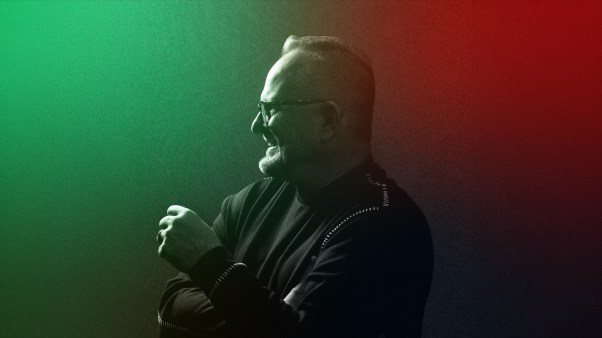A scroll-shaped steeple. An imposing ark-shaped atrium. A pipe organ feature reminiscent of 19th-century North American Methodist churches.
These are some of the more striking elements in the Three-Self churches that Brazilian German architect Dirk U. Moench has designed in China. The Lutheran founded the design firm INUCE in 2011 and has offices in Fuzhou, China, and Münsterlingen, Switzerland, where he is currently based.
Moench has designed four churches in China. Two churches in Fuzhou and Luoyuan were completed in 2018 and 2021, respectively, while one in Julong was finished this year. Another ongoing project in Jinshan has garnered nationwide attention and received tens of thousands of likes on social media platforms like Weibo and Xiaohongshu (Little Red Book), according to Moench.
CT interviewed Moench on how Chinese church design interfaces with Western architectural principles and the ways a church’s physical building can interact with and participate in China’s swiftly evolving urban landscape.
When you were asked to design a church in Fuzhou’s Jinshan district, Chinese officials and politicians told you that they wanted “a modern church for a modern China.” How did you interpret this?
In many ways, this is a political sentence. You have to fill it with meaning as an architect and as a Christian. Architects like to refer to the term genius loci, or “spirit of the place” in Latin, in that a building is a reaction to its immediate built environment, like historic buildings, specific roads, landscape features, and also built tradition—an architect’s filtered and amplified perception of a place’s essence.
Since Chinese Communist leader Deng Xiaoping’s 1979 reforms, the country has been transformed, and cities today don’t have much of a tradition as a place. There are modern buildings built alongside modern roads, with residential developments, offices, factories, and so on. You don’t have the “spirit of the place” that you can react to.
But what’s always very important to me is to understand the spirit of a community, the spirit of the individual congregation. I have learned that Chinese Christians are asking themselves big questions: How will this new building express who we are? How will it relate to this place and fulfill our needs?
Chinese and Western architectural traditions are often in dialogue here, and I try to create an artistic synthesis of them. This doesn’t occur on a universal scale but in more particular terms, such as: What is the physical environment in which this church is going to grow? What are the concerns of the individual community? What are their interests in the European and Western elements of Christianity, if at all?
Some years ago, authorities removed crosses from church buildings in China. How do the churches you’ve designed feature crosses?
China is a vast country. It’s a continent of its own. It’s hard to say that what happens in one area will happen in another part of the country. Local culture, religious policy, the relationship between Christian churches and the religious bureau might differ across places.
I’ve heard that there are regions in which the relationship between the authorities and Christian congregations is more harsh. But I’ve never had to consider or compromise my artistic and architectural pursuits.
The crosses I’ve designed involve aesthetic and situational considerations. For instance, the Jinshan church cross is 70 meters high and looks like a simple cross with classic proportions. The surprise for Chinese Christians lies in its color.
Almost all Protestant churches today have a red cross on top of their spire—it’s quite chubby and made of plastic to be illuminated at night. Westerners often feel reminded of the Red Cross or hospital signs. So I opted against that color and the neon light illumination and proposed to have it in white to complement the purity of the church building below it.
 Shikai / INUCE
Shikai / INUCEWhat were some Eastern and Western architectural principles that influenced the churches you designed?
One of the big ideas that I try to bring across is the very European notion that the church is a piece of public infrastructure. It’s part of the city, and it’s there to service the city visually but also spatially and functionally. Even though Christianity is a minority religion in China, a church building can still be appealing to a broader public. This idea has been received very favorably by the local congregations.
In the West, we think of a beautiful curved roof as an icon of Chinese architecture. But what is most genuine and central to the idea of Chinese spatial organization is the wall.
Traditionally, the Chinese city is composed of courtyard houses, which are fully enclosed by a wall. There will be a major gate, usually at the center of the south wall, which has decorative features and a little roof of its own, that serves to represent this unit, this house, this family, to the outside world. The wall is not a safety concern; it’s a millennia-old tradition.
When missionaries in China started to build churches there, they often acquired plots in the middle of a Chinese city that were once a courtyard house. So the idea of a wall or enclosure around a “Western” church is not entirely foreign, and this principle was continued.
Hence, the earliest contemporary churches that we have in China are all behind walls and have gates as well. The spatial thinking is very Chinese, while the actual church is more Western-inspired.
Now, I want to challenge this because the Chinese Christian communities that I have talked to do not see themselves as a protective minority anymore. They see themselves as a vital element of society that can contribute and help to make a better city, not just through charitable works but also in being a part of public, urban life.
How did you translate this refreshed understanding of Christian community into reality?
The Hua Xiang church in Fuzhou is one example. People call it “the pink church of Fuzhou.” It’s surrounded by high rises and shopping malls, and sits beside an old church built by Methodist missionaries in the 1930s.
 Shikai / INUCE
Shikai / INUCEI was not the first architect that the community had consulted for this project. There were already several designs—a gothic church with two spire towers and another with a more Romanesque basilica look. The congregation was not very satisfied with these ideas because they looked “lost” and did not have a harmonious relationship with the city. At the same time, they were wondering about their mission and whether the new building should cater to older members or draw young people. What I said was that the answer is not either-or; it’s both-and. To attract young people, you have to give them a sense of historical depth. They need to know their foundation and what they are building upon.
We had to let go of the notion of a European-inspired ideal church, like a cross-shaped church with a tower, and instead take inspiration from the city’s heterogeneous and chaotic situation. Maybe this new church could help to establish positive relationships to the skyline or continue the pitched roof motif emblematic of Chinese architecture.
Instead of high walls and formal entrance gates, like in traditional Chinese architecture, we installed retractable barriers at access points to the church, which are hardly visible and stay open late into the night. There is ample greenery providing shade and generous outdoor seating for believers and tourists alike.
Your other church designs also take inspiration from the environment. Why is that important to you as a Christian and as an architect?
In Chinese cities, you see shops moving in and out, façades being redecorated to look fancier, louder, and more attractive than the neighbors. But a church design is more timeless and stable. It is an architectural mediator that can help to harmonize imbalances in the built environment or bring the beauty of the place into focus.
In this way, a church building has a dialectical relationship with its environment: It stands out and blends in.
 Shikai / INUCE
Shikai / INUCEFor example, Julong is a newly developed town in the outskirts of Quanzhou, a port city in the southern province of Fujian. People who live there have come from all over the country. Making the Julong church into an ark or a haven, inspired by the idea of Peter as a rock on which Jesus will build his church (Matt. 16:18), sends a message of stability within the torment of a changing world.
Its location at the foot of Julong mountain also doesn’t just allow people to gaze at the beauty of nature; it’s a visual reference to the Sermon on the Mount, where Jesus went up a mountain to preach and teach.
Do you think beautiful church architecture contributes to spiritual practices like worship or prayer? Or is it a distraction?
It’s the age-old Protestant question you’re asking: Does formal beauty inspire and bring you closer to God or distract you from this? That question needs to be answered by the congregation. As an architect, you cannot create a place of worship that suits your personal inclinations or beliefs. You have to listen to what the community wants.
The interior of the Hua Xiang church is a very simple white space, with gently undulating upper gallery floors, a flat ceiling, and a reduced number of light fixtures. It’s a very classical, almost Reformed understanding of how a liturgical space should look.
But a large pipe organ, popular in North American churches in the second half of the 19th century, functions as the main feature of the stage. That was a wish from within the congregation, who wanted an element of continuation with their Methodist heritage.
Does that pipe organ inspire the sermon or inspire prayer? I don’t think so. But I do think that the music it creates does reestablish bonds to the very Christian forms of being together. The church appreciates that they feel closer to their own tradition through it.
Is there something you hope for visitors to these churches to take away about God and about Chinese Christianity?
As an architect, I don’t impose myself into what people should think about God. I am not here to protect a specific or single understanding of God. I plan and design the physical church, but the real church is the people inside, the pastors and brothers and sisters who preach and project and teach Christianity.
If they think that my architecture helps them to do all of these, then I’m happy. I do not think it’s appropriate for me to think further than that.













